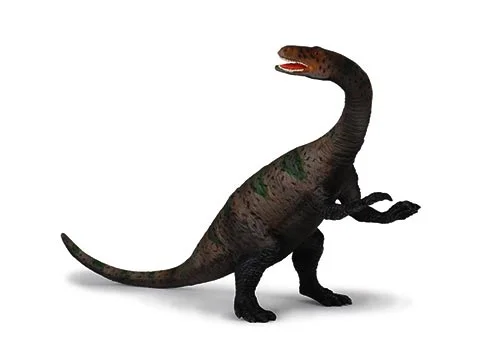Lufengosaurus (Lufeng lizard)

Lu-feng-sore-us
C.-C. Young - 1940
Herbivore
Estimated 6 meters long
Sauropod
L. huenei (type), L. magnus
China - Lufeng Formation
Early Jurassic, 200-190 million years ago
Lufengosaurus Facts
Lufengosaurus is a genus of early sauropodomorph dinosaur that lived during the Early Jurassic period, approximately 200-190 million years ago. It was first discovered in the Lufeng Basin in Yunnan Province, China, and was named after the area in which it was found.
Lufengosaurus was a relatively small dinosaur, measuring up to 6 meters (20 feet) in length and weighing around 500 kilograms (1,100 pounds). It had a long neck and tail, and a small head with leaf-shaped teeth that were likely used to strip vegetation from branches and twigs. Its limbs were slender and well adapted for walking on land, although it was also capable of rearing up on its hind legs to reach higher vegetation.
One of the most notable features of Lufengosaurus is its early appearance in the fossil record. It is one of the oldest known sauropodomorphs, and provides important insights into the early evolution of this group of dinosaurs. Sauropodomorphs are a group of long-necked, herbivorous dinosaurs that include the later, more familiar sauropods like Brachiosaurus and Diplodocus.
Lufengosaurus is also important because it is one of the most well-preserved early sauropodomorphs. Fossil specimens of Lufengosaurus have been found with complete or near-complete skeletons, which have provided detailed information about its anatomy and biology. This has allowed paleontologists to study the evolution of this group of dinosaurs in greater detail.
In addition to its scientific significance, Lufengosaurus is also a popular subject of dinosaur art and media. Its distinctive appearance and early evolutionary position make it an interesting and appealing dinosaur for both scientists and the general public.



